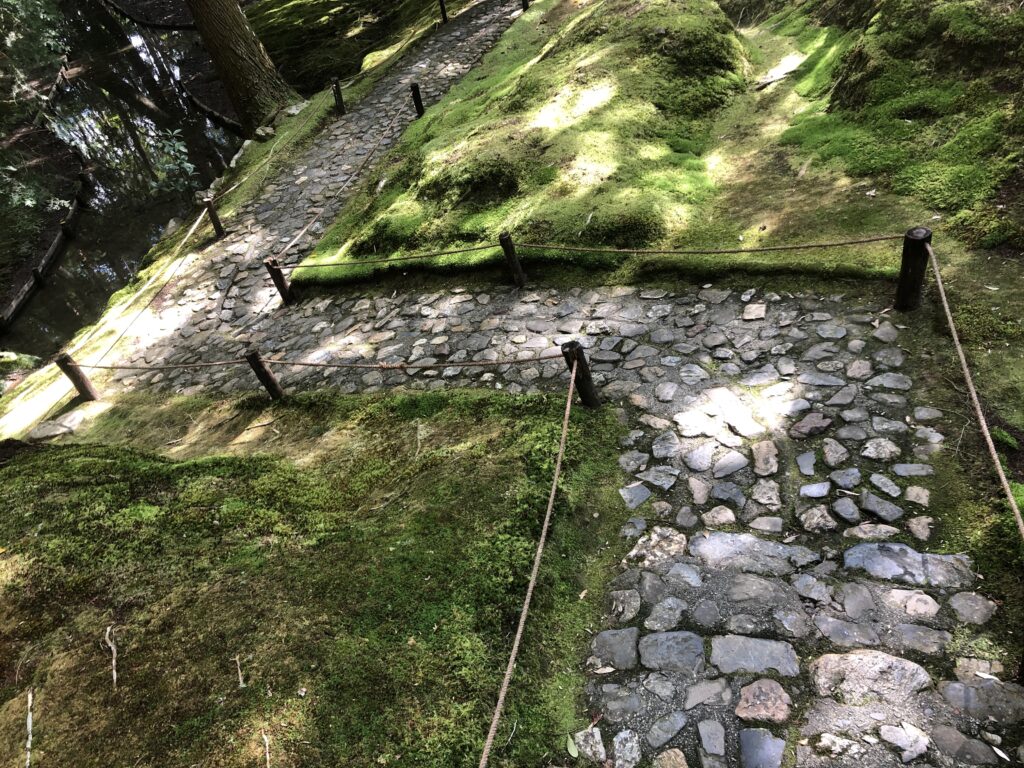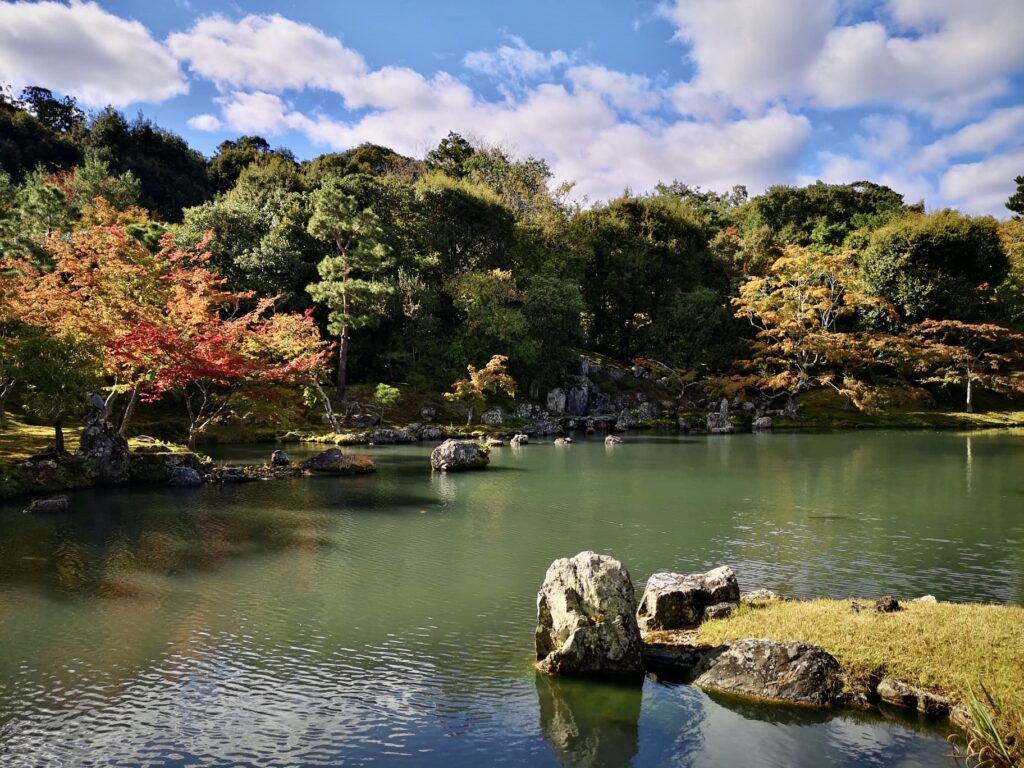
On the morning of our seventh day in Japan, we entered the visual space of Prince Shotoku once again. While our memory drifts off into the perspectival construction of the painted silk panels we encountered at the beginning of our trip in Tokyo, suddenly we find ourselves in the middle of the famous „moss garden“ at Saihōji. As far as the eye can see, the micro cosmos of the garden unfolds as a stunning landscape, renewing itself with every step we take. With its shifting scales and textures, we walk through real and imagined representations of space and time.

That landscape and poetry are not to be separated, became stunningly visible by looking at the dry landscape or „stone garden“ at the same site. After our shared experience of copying Sutra verses with a black ink calligraphy brush in the Zen temple that also belongs to the Saihōji complex, we were able to draw our own lines between the practice of mark making in scripture as well as in the practice of landscaping. While moss, stone, bark and water create their worlds of representation, textures produced by lines and washes in numerous configurations generate their very own pictorial spaces on plane surfaces.

Very different landscaping strategies are revealed at the gardens of Tenryūji. Although the term shakkei (借景) doesn’t appear before the 17th century, it helps us to understand the principle of embedding surrounding features into the view of the garden as a landscape. The performed austerity of the created landscape finds an apogee in the view of the pond, framed by its autumn leaves and inhabited by cranes.

After a refreshing walk through a nearby bamboo forest and a lunch assorted of local delicacies, we were prepared to encounter the temple of Seiryōji with its remarkably puzzling Buddha sculpture. Believed to have been produced in 10th-century China, the wooden artifact became a true icon and set stylistic standards for centuries to come. Guided by the displayed replicas of small objects that were found inside the body of the figure in 1953, our discussion intensified around questions of representation and replica, hidden presence and outside perception.

While the small tea houses in today’s Zen gardens functioned as spaces for aesthetic discourses during the medieval period, we ended our day at its contemporary equivalent in central Kyoto. Moss green cups of matcha formed the backdrop to discuss, synthesize and conclude yet another perfect day.
